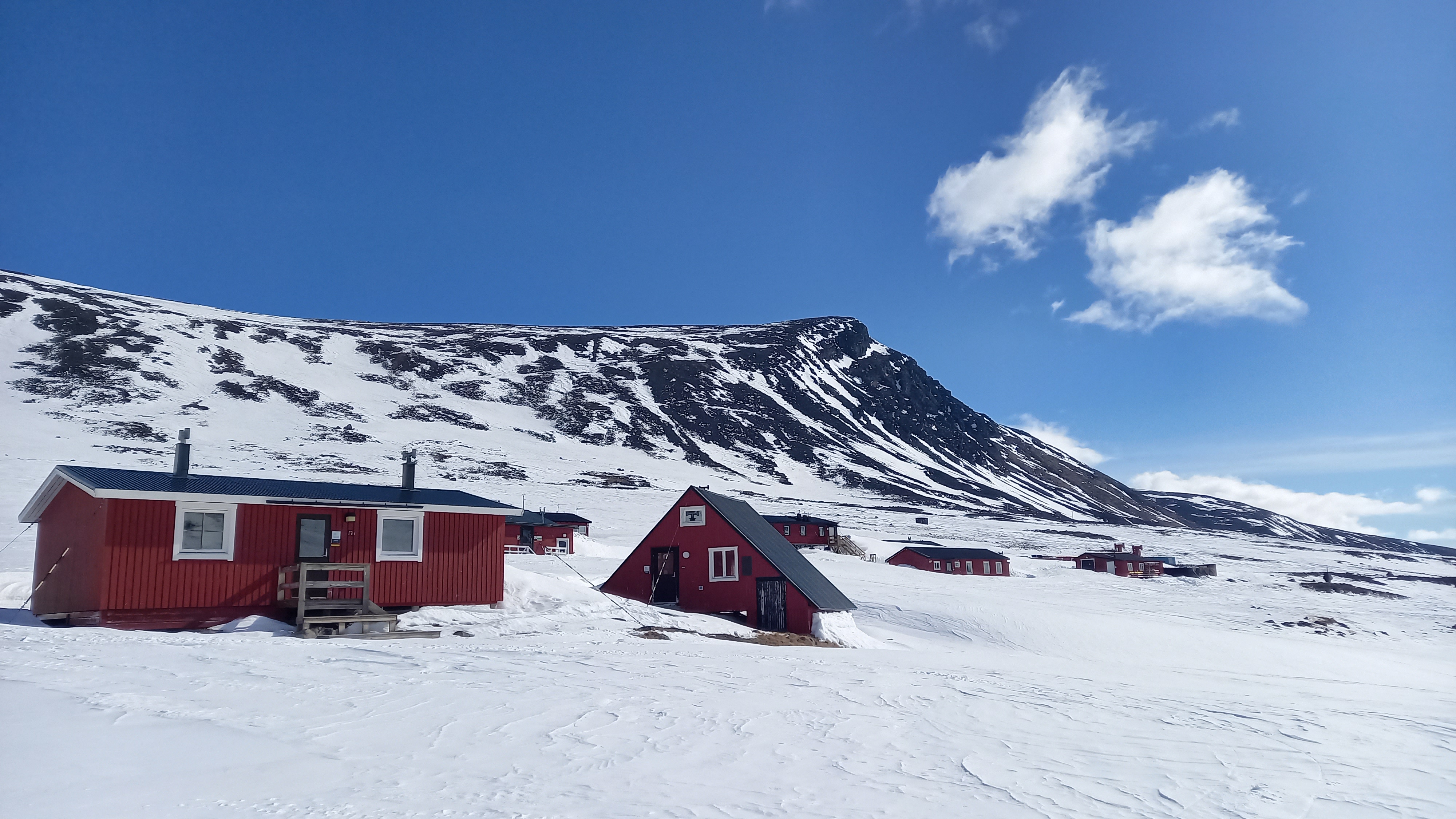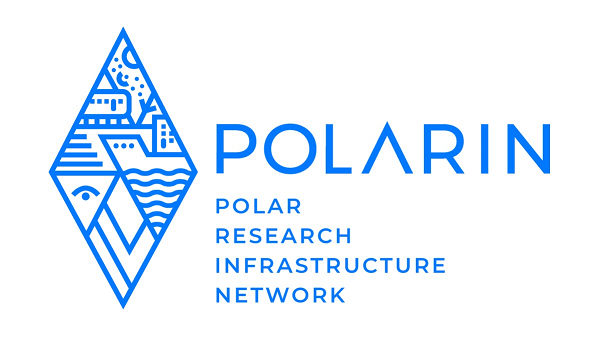Tarfala Research Station

Address
Delivery address summer:Tarfala forskningsstation
c/o Kallax Flyg AB
Nikkaluokta flygbas
SE 98199 Nikkaluokta
+46(0)980-81000
Shipping address winter:
Tarfala forskningsstation
c/o Nikkaluokta Sarri AB
attn. Erik Sarri
Nikkaluokta 1104
SE 981 99 Nikkaluokta
+46(0)980-55015
Station manager
TRS Director: Nina Kirchner, +46 (0)70-60 90 588; TRS Station manager: Annika Granebeck, +46 (0) 72-148 91 49Station Features
Opening year: 1946 Status: OpenFacilities
Station name and owner
Tarfala Research Station is a centre for glaciological and alpine research at Stockholm University, Sweden.
Location
Tarfala Research Station is located at 1130 m a.s.l. in the high-alpine Kebnekaise Mountains, northern Sweden. It is Sweden's only research station in a high alpine arctic environment surrounded by glaciers. The nearest settlement is the Sami village Nikkaluokta, 24 km southeast of the station. There is a mountain tourist station (STF Kebnekaise fjällstation) ca 7 km from TRS, and a tourist hut (STF Tarfalastuga) ca 1 km from TRS.
Climate data
Grey colours are WMO Climate Normals including maximum and minimum values. Blue colours are individual years.
Climate data for the stations where extracted via Copernicus Climate Data Store, from the global gridded reanalysis product:
ERA5 monthly averaged data on single levels from 1940 to present.
Description and source code: Roemer J.K. 2023. https://doi.org/10.5281/zenodo.10214922
Data Source: Hersbach et al. 2023. Copernicus Climate Change Service (C3S) Climate Data Store (CDS), https://doi.org/10.24381/cds.f17050d7
Biodiversity and natural environment
Tarfala Research Station is surrounded by Sweden's highest mountains and several glaciers, and it is embedded in a time-machine like natural laboratory since climate warming is more pronounced in the Arctic ("Arctic Amplification"); this fuels a rapid decay of the small and vulnerable Swedish glaciers , and a rapid emergence of postglacial terrestrial and aquatic environments and associated changes in hydrological regimes and ecosystems can therefore be studied at and around TRS. Lake Tarfala, ca 1 km from TRS, is an exceptionally deep arctic alpine lake (51 m) that is seasonally ice covered and dimictic. Permafrost in the area is patchy, and vegetation ranges from high-alpine flora to mountain birch forest at the tree-line.
History and facilities
TRS was officially inaugurated in 1961 as an infrastructure for research in glaciology and geomorphology at Stockholm University. TRS is usually open from the end of March to the beginning of May, and from the end of June to mid- September. All outdoor activities, including transport to and from the station, are dependent on variable mountain weather. It is therefore recommended that you include extra time in your stay to allow for periods when fieldwork and/or transport may not be feasible. TRS can accommodate up to 28 guests at a time, in 2- and 4-person bedrooms in houses with running water and dry and/or incineration toilets. All meals are included – breakfast and dinner are served in the galley, lunch is usually a packed lunch for all heading into the field. There is no possibilities for self-house hold. TSR has two showers in the service building, where also the sauna is located. Tarfalajokk runs by the service house, providing refreshing cold water between sauna rounds. TRS has a modern lecture hall seating ca. 30 persons, a mechanical workshop and a simple wet-laboratory. Please contact the station manager if you want to use the workshop and/or the laboratory. Mobile phone reception is unreliable around Tarfala, but usually works relatively well in the Tarfala valley if you use the operators Telia or Tele2. TRS location in an Arctic and alpine setting far from the nearest road and medical assistance, imposes particular requirements when it comes to safety, both during fieldwork and at the station. We therefore have safety and etiquette rules which shall be followed by everyone at the station, both staff and visitors, so that we together can experience our beautiful work place in a safe and enjoyable way. Our safety regulations are based on recommendations from the Swedish Consumer Agency (a government agency whose task it is to safeguard consumer interests) and have been produced in collaboration with representative from the Swedish Mountain Rescue.
General research and databases
TRS is Sweden’s only research station located in an alpine arctic environment surrounded by glaciers. Here we conduct high quality, internationally recognised scientific research on Swedish alpine and glacial environments. We do both disciplinary and interdisciplinary research, with links to the effects of climate change on the global cryosphere and with focus on Swedish glaciers. Long term observations of watercourses and ecosystems are also carried out alongside long term observations of the changing state of glaciers. The data is made available with open-access through different databases. TRS is also a platform for field-based teaching, which is available for both international and national students and teachers. TRS also collaborates with non-academic actors who are active in the unique environment around the station, and communicates relevant research results to a wide range of target groups. We welcome researchers and academic courses from various subject areas and universities, academic workshops and meetings! An important component of the research conducted at TRS is the continually measurement of Storglaciären’s mass balance which has been ongoing since 1946, and is included in the World Glacier Monitoring Service’s database. The mass balance dataset from Storglaciären is the longest of its kind in the World and engages both the general public and researchers across the globe. The measurements have helped shape a comprehensive knowledge of the interaction between the glacier and climate, local temperatures and precipitation changes, which together play an important role in our understanding of glacier dynamics. TRS is also responsible for measuring the annual height of Kebnekaise’s southern peak, which determines the highest point in Sweden and thus generates great public interest. On 11 August 2023, the southern peak of Kebnekaise was measured at 2,093.2 meters, which was lower than the northern peak (2097 m). It is the lowest altitude that has been measured since the measurements started in 1902.
Link to data: https://dataportal.eu-interact.org/stations
Station Monitoring
Human dimension
The nearest village is Nikkaluokta, inhabited by c. 30, mainly Sami people.
Access
Travel to TRS is recommend to go via Kiruna and Nikkaluokta. Kiruna is served by train and plane from Stockholm. Nikkaluokta is served by bus from Kiruna (c 60 km). From Nikkaluokta, TRS is reached by a 24 km long trail hike (summer), or by skies or snowmobile (winter). Helicopters operate from Nikkaluokta during high season, and from Kiruna during low season. At TRS we strive to minimise our carbon footprint by choosing the most climate friendly modes of transportation to and from the station.


